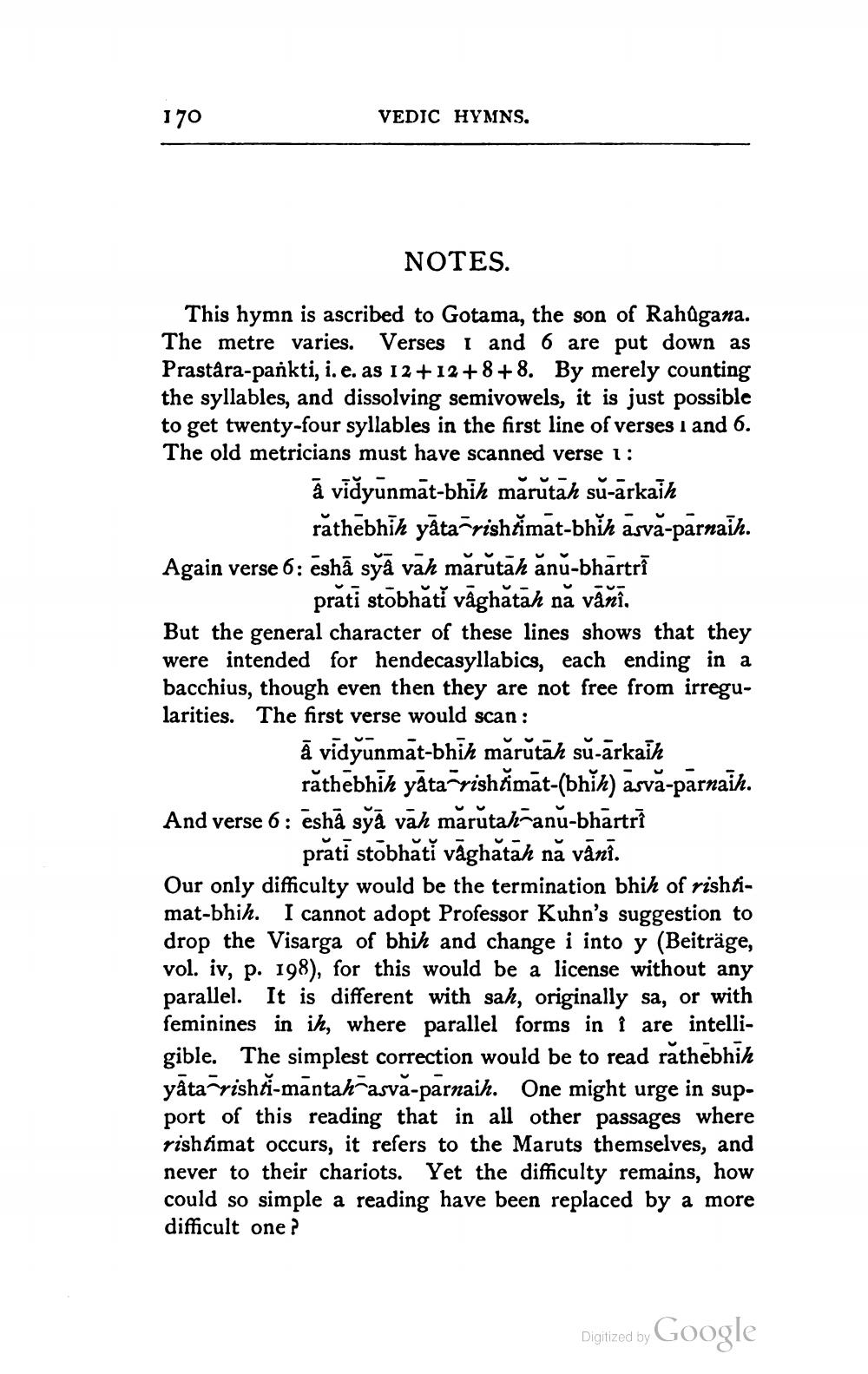________________
170
VEDIC HYMNS.
NOTES.
This hymn is ascribed to Gotama, the son of Rahûgana. The metre varies. Verses i and 6 are put down as Prastara-pankti, i.e. as 12+12+8+8. By merely counting the syllables, and dissolving semivowels, it is just possible to get twenty-four syllables in the first line of verses i and 6. The old metricians must have scanned verse 1:
ā vidyunmat-bhih mărutah su-arkaih
răthebhih yāta rishtimat-bhíh asva-parnaih. Again verse 6: eshā syā vah mårütah ănů-bhārtrī
prati stobhəti vāghătah na vānī. But the general character of these lines shows that they were intended for hendecasyllabics, each ending in a bacchius, though even then they are not free from irregularities. The first verse would scan :
ā vidyunmāt-bhin mărūtāh sú-ārkaih
răthebhih yāta rishtimāt-(bhỉh) āsvā-parnaih. And verse 6 : eshā sýā vah mărutah-and-bhārtrĩ
prati stobhati vāghatah na vānī. Our only difficulty would be the termination bhih of rishtimat-bhih. I cannot adopt Professor Kuhn's suggestion to drop the Visarga of bhih and change i into y (Beiträge, vol. iv, p. 198), for this would be a license without any parallel. It is different with sah, originally sa, or with feminines in ih, where parallel forms in 1 are intelligible. The simplest correction would be to read rathebhih yāta rishti-māntahasva-parnaih. One might urge in support of this reading that in all other passages where rishtimat occurs, it refers to the Maruts themselves, and never to their chariots. Yet the difficulty remains, how could so simple a reading have been replaced by a more difficult one?
Digitized by
Digized by Google




